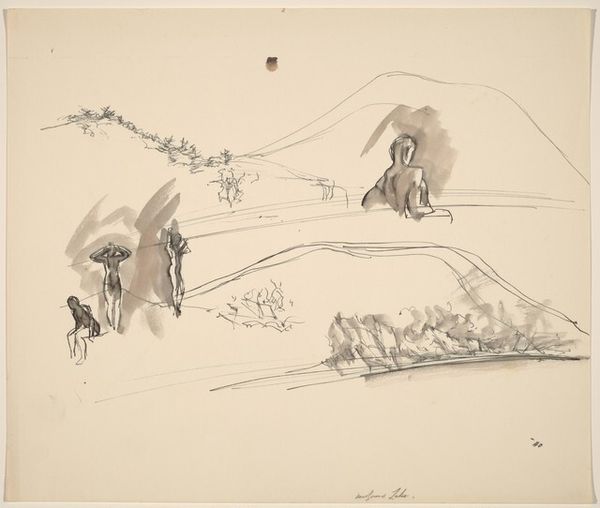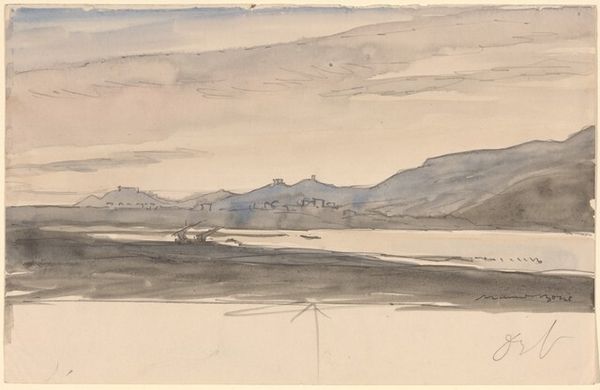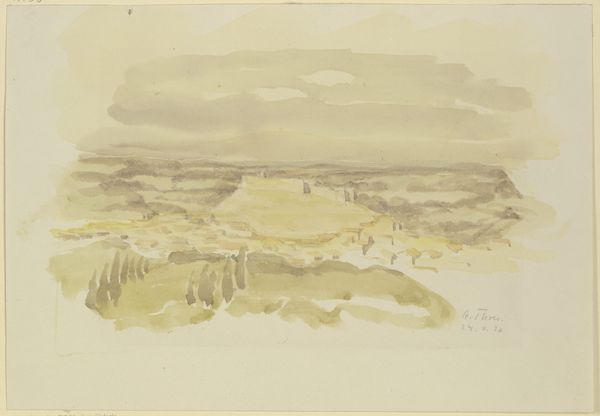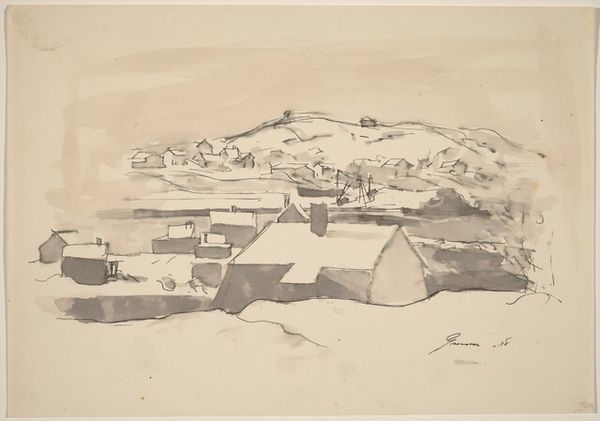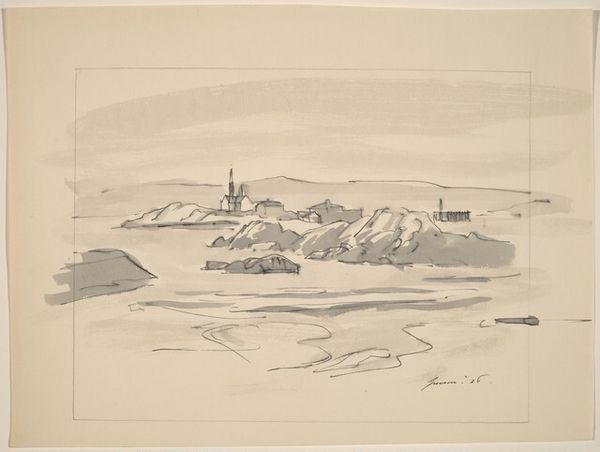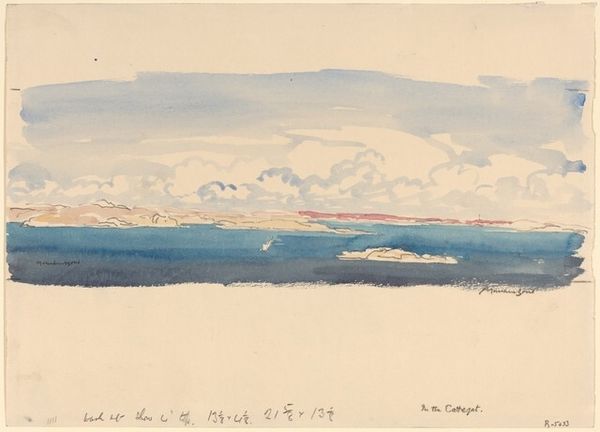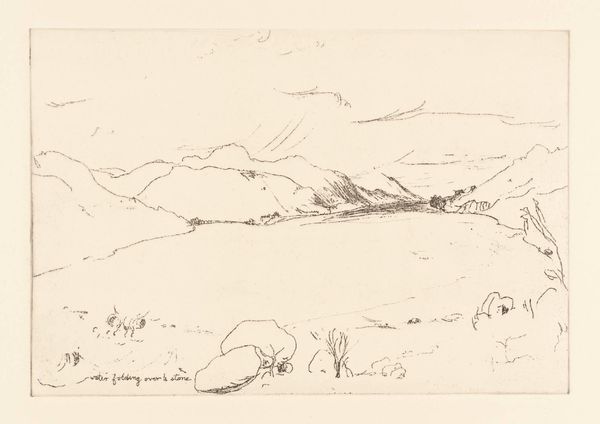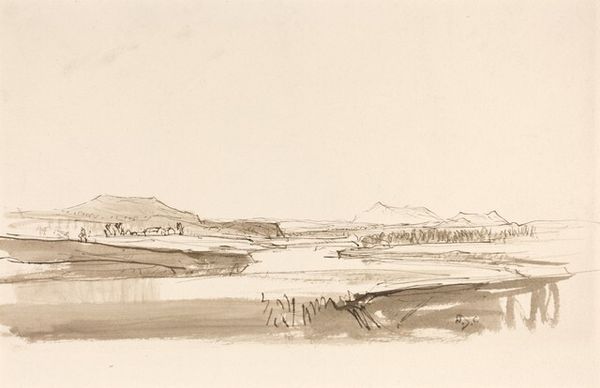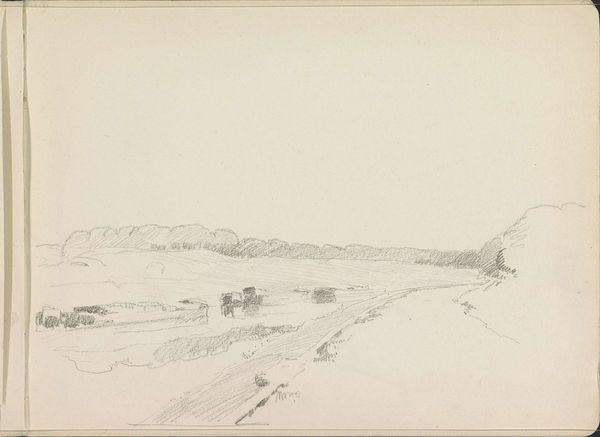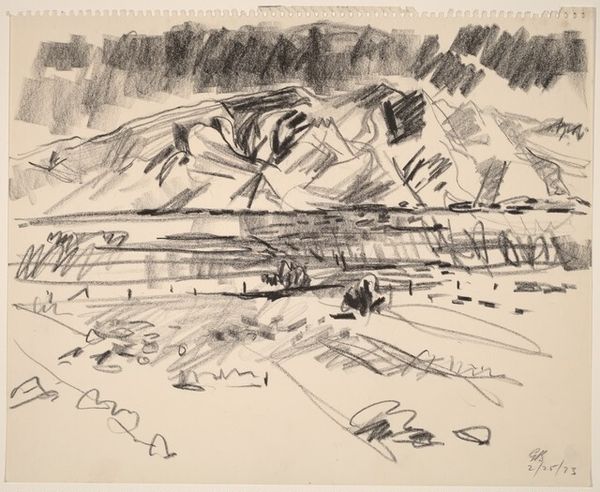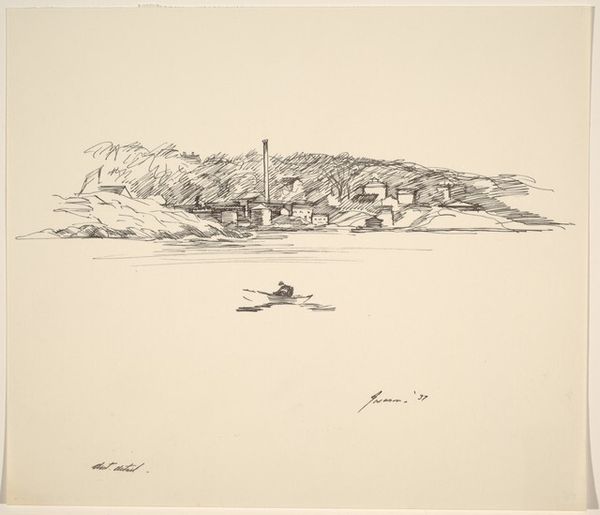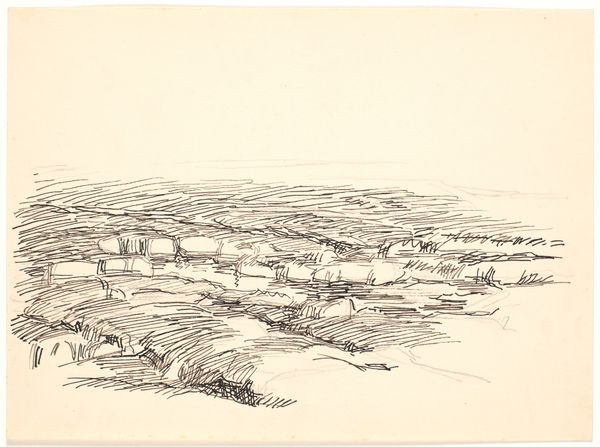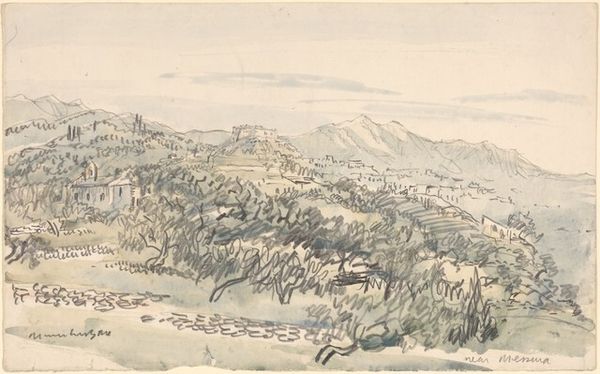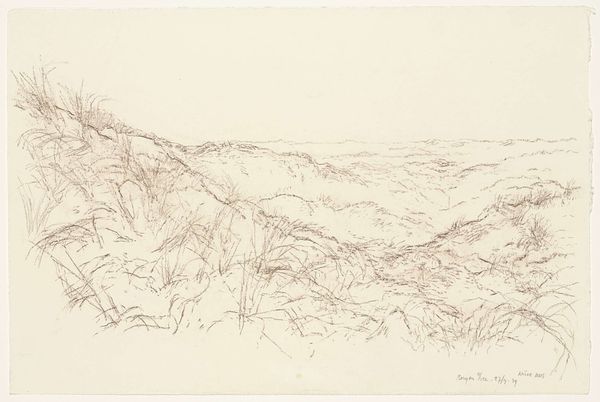
Dimensions: overall: 22.1 x 29.3 cm (8 11/16 x 11 9/16 in.)
Copyright: National Gallery of Art: CC0 1.0
Curator: Here we have Donald Carlisle Greason’s "Newfound Lake," created in 1939, a work that offers us a glimpse into the artistic interpretations of natural landscapes during this period. Editor: My initial impression is one of quiet contemplation. The muted, earthy tones and soft washes of ink give the scene a hazy, almost dreamlike quality. It really softens what could be a grand landscape into something much more intimate. Curator: Absolutely. Greason was working during a time when plein-air painting gained popularity, but what’s interesting here is his combination of that approach with ink and watercolor. We must remember that landscape painting was really pushed through national art programs. It's less a direct recording and more about conveying an emotional response to a specific place. How do you feel the materials contribute to that, especially in contrast to the art being promoted via these programs? Editor: The materiality speaks to immediacy. You can see the rapid strokes of the ink drawing and how quickly the watercolors were applied, almost as a transcription of a fleeting moment outdoors. Watercolor allows for this lovely combination of control in the line work but then also an element of chance with the washes. This suggests a deliberate decision to use a more portable and readily accessible means to create art. He might even have been considering the expense of oil paints. Curator: Precisely. The use of ink drawing and watercolor emphasizes accessibility. Unlike the grand oil paintings that museums often showcase, works like this democratize art production. And think, even though there was some government sponsorship for certain landscapes and American scenes, the individual artist, away from city life, was still prevalent in the national imagination. Editor: Right, and thinking about production—the artist making art that wasn’t meant to last—there's an element of disposability that makes one think about it. Landscape is an ideal theme, so the artist uses minimal resources in order to give insight. It's less about longevity. The materials also signal portability, almost suggesting travel as labor for the artist who creates work in plain air. Curator: Yes! Seeing "Newfound Lake" not only invites us to reflect on the represented landscape but also to think about how the artist positions themself, perhaps questioning assumptions around access, labor, and value within the broader artistic landscape of the late 1930s. Editor: And for me, contemplating the way this artist renders his perception with ink and watercolor evokes a sense of solitude, further enhancing that initial intimate feeling and prompting reflection on my place within similar natural scenes.
Comments
No comments
Be the first to comment and join the conversation on the ultimate creative platform.
